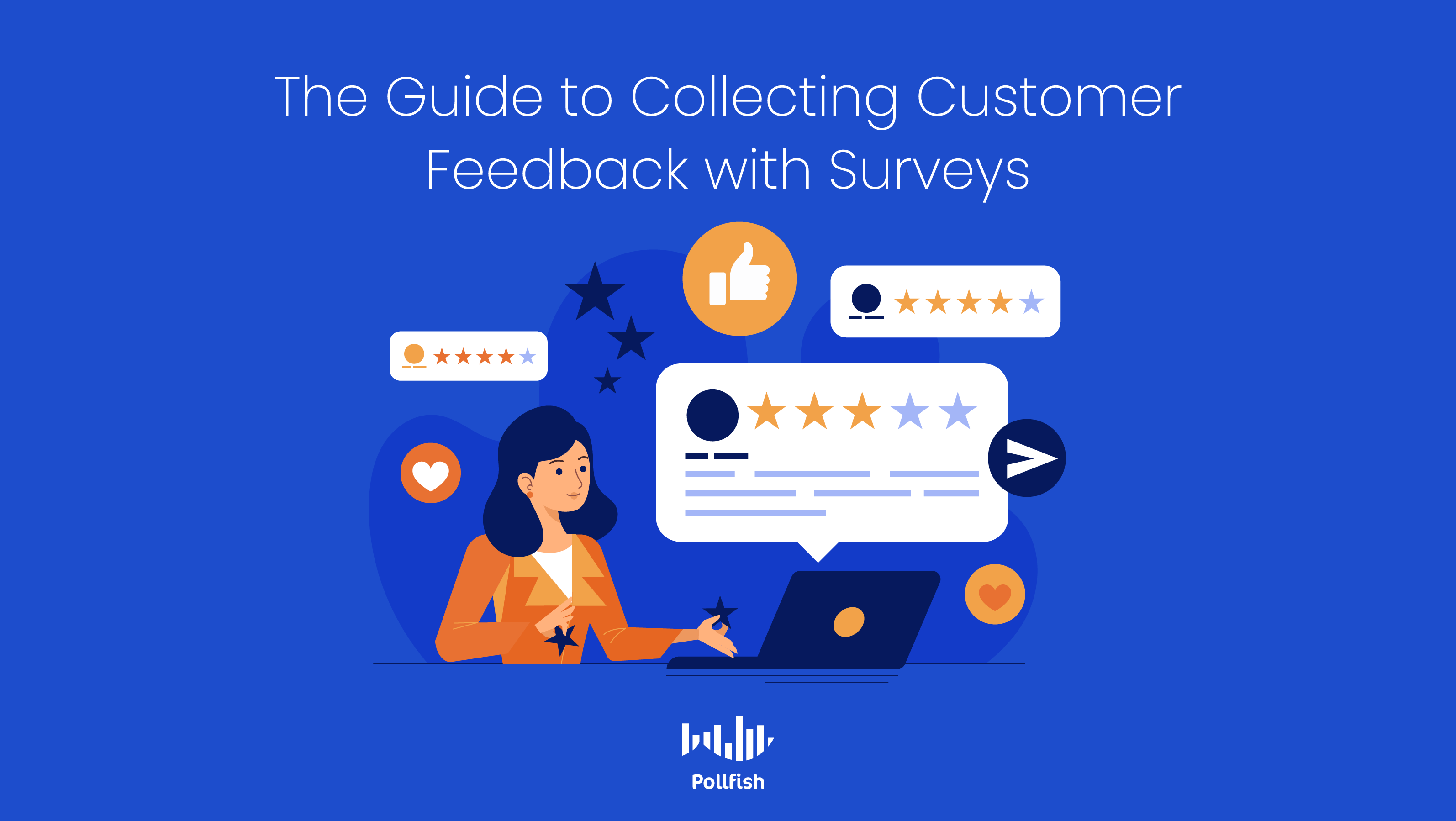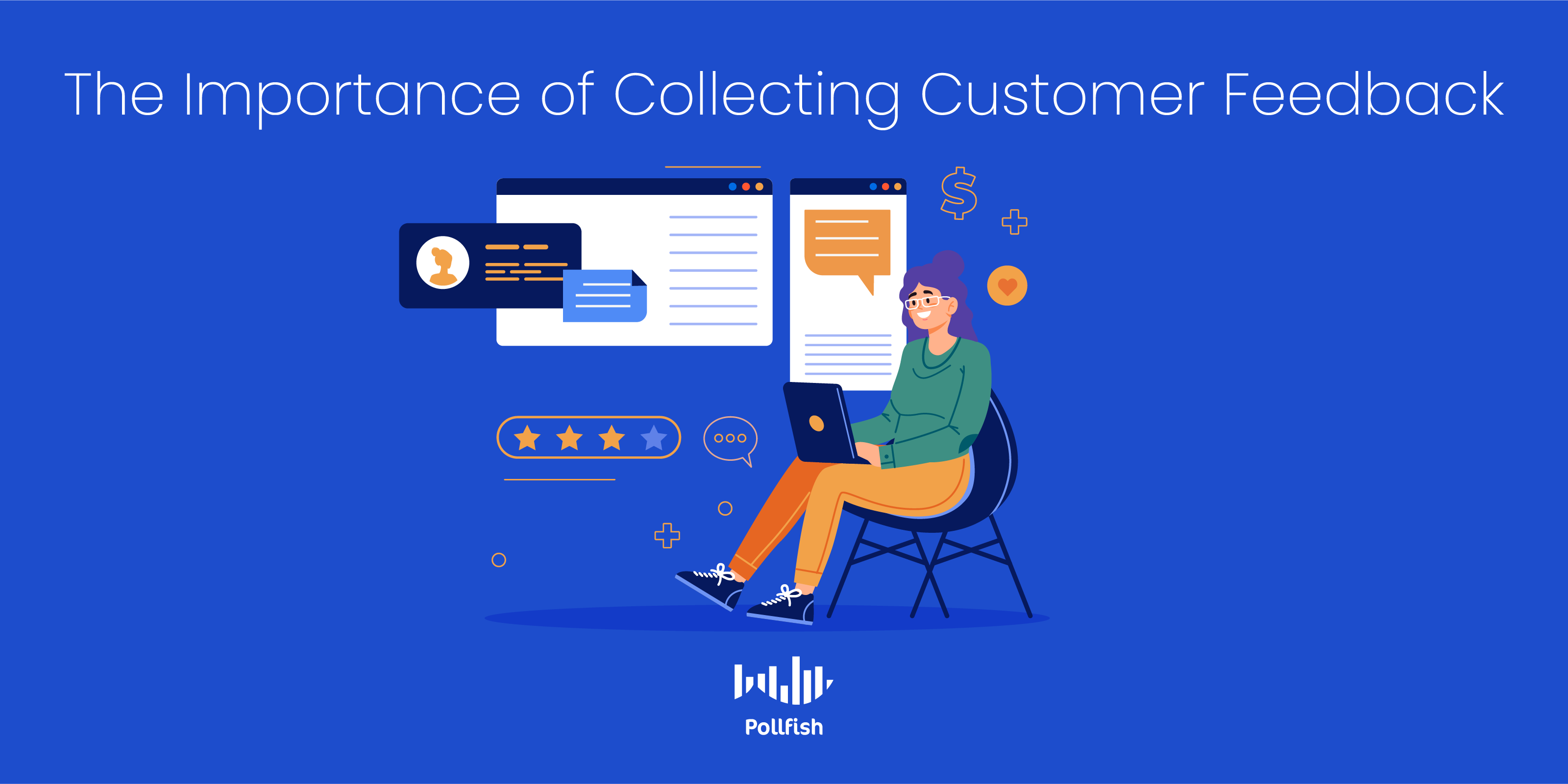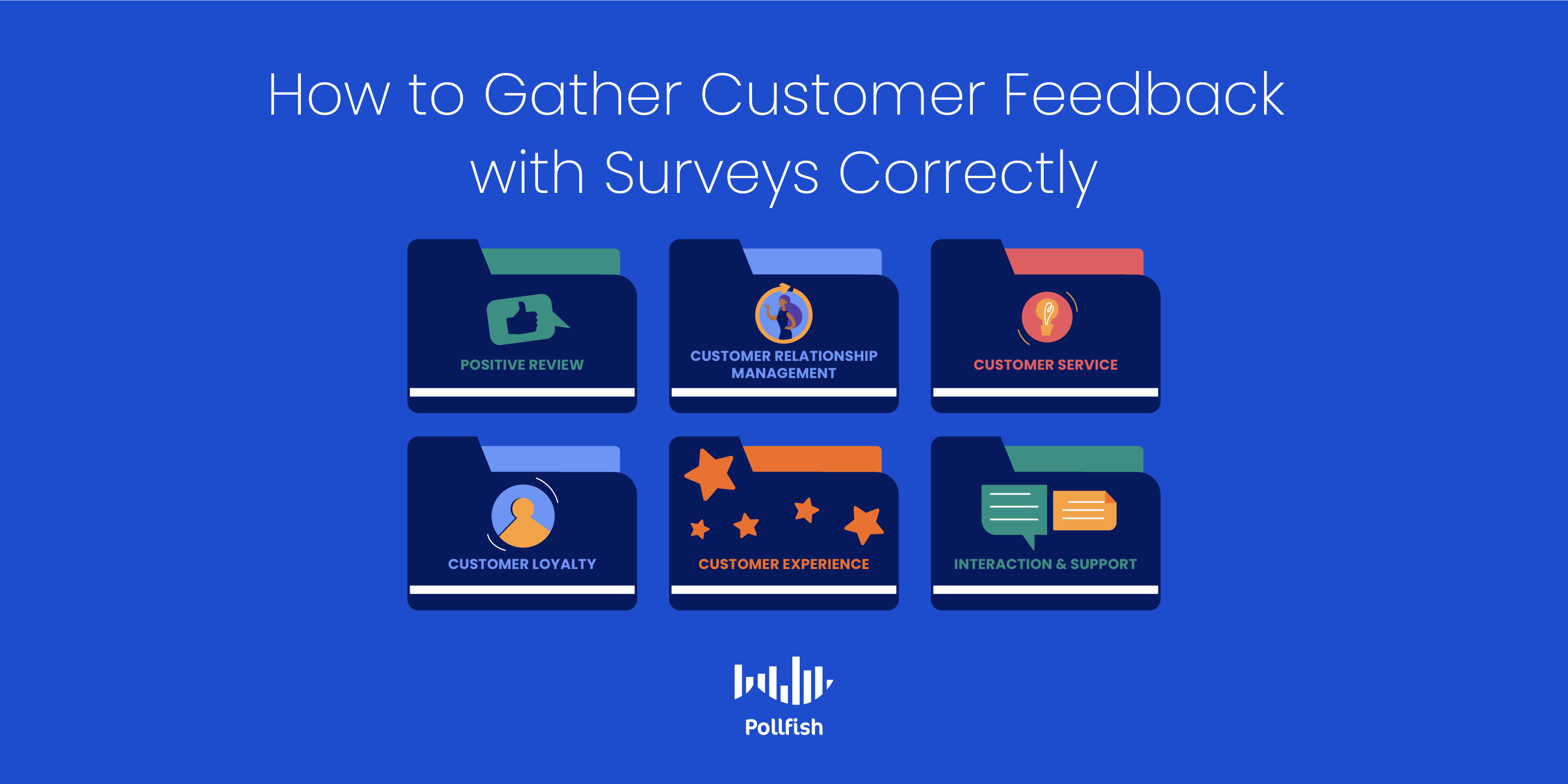How to Collect Customer Feedback with Surveys

You won’t be able to understand your target market and cater to its needs without collecting customer feedback. Relying solely on secondary market research is a thing of the past, with the accessibility and speed to insights that many online market research tools provide.
It’s now more important than ever to gather customer feedback, as there are so many digital outlets for customers to voice their opinions, be they frustrations or satisfaction.
72% of customers will share a positive experience with a business with 6 or more people. However, 13% of unhappy customers will share their experience with 15 or even more people.
At face value, this disparity may not seem so caustic, when you compare 72% with 13%. However, the challenge lies in the fact that, in most cases, customers don’t share their dissatisfaction with businesses. In fact, only 1 in 26 unhappy customers will complain.
As such, it is up to businesses to extract customer feedback from their customers.
This article provides an in-depth glance into customer feedback and how to collect it with survey research, using the correct methods and the correct tool.
Understanding Customer Feedback
Customer feedback refers to all the information that customers provide about their experience with a business, whether it is in regards to a product, a service, a specific experience and virtually everything else in their customer buying journey.
Customer feedback can be either verbal or written communication from your customers, expressing how they feel when dealing with your business in any capacity. As such, aside from giving feedback on the main issues listed above, customers can sound off on other matters concerning your business, such as advertisements, sensory influences (think taste and smell) and your brand in its entirety.
The purpose of customer feedback is to reveal customers’ degree of satisfaction or dissatisfaction with a business across touchpoints and offerings. This kind of feedback is used to help product, marketing, customer service, customer success and sales teams understand how to improve, ultimately to make their customers happy.
Companies can collect customer feedback through a variety of means, such as interviewing customers over the phone, using VoC programs, asking for reviews, speaking with them in-store and through other means.
You can also passively collect feedback for your team by providing your customers with a place in the product where they can make comments, complaints, or compliments. This is usually facilitated via SaaS and other cloud-based services.
The most potent way of obtaining customer feedback is through polling software, which allows companies to survey the masses belonging to their target market. It can also target specific individuals by sending surveys to them via the Distribution Link feature.
The Importance of Obtaining and Studying Customer Feedback
All businesses, whether they are B2C or B2B, must work towards collecting and studying their customer feedback. This is because, in order to improve your product, service and overall customer experience, you’ll need to understand how your customers feel towards all of these matters.
Customer feedback essentially serves as a guiding source for your business’s growth. It allows customers to express exactly what they appreciate and dislike about your company; this is invaluable information for improving your business and taking any action. After all, you wouldn’t want to launch campaigns that drain your funds while yielding little to no ROI.
In addition, feedback is powerful, as it grants your leadership team insights from the customers themselves, which allows your team to forge a path forward in every part of your business — from product to marketing, through UX and customer support. These insights are especially critical for building and maintaining customer satisfaction.
By gaining customer feedback, your business will be able to sustain a customer-first model that prompts customers to buy from you continuously. As such, using customer feedback is also a key towards building customer retention.

Additionally, customers tend to favor marketing personalization, as no one likes to be sent generic and stagnant messaging and offers. Marketing personalization, as its name suggests, allows businesses to communicate in a hyper-personalized way to customers. But without collecting their feedback, it is nearly impossible to create personalized experiences for them.
Moreover, without customer feedback, your company will never know if customers are reaping value out of your offerings. This presents a major lack for product and go-to-market teams, since without feedback, they’re wasting time and resources on offerings that customers may draw little value from. Remember, as per the intro, only 1 in 26 unhappy customers complain.
When customers draw little to no value from a product, or are unhappy with other business-related interactions and issues, they will leave, increasing a company’s customer attrition rate, while lowering its customer lifetime value.
Needless to say, your business will see an exodus of customers and plummeting sales if it lacks customer feedback.
Despite the importance of gaining customer feedback, customers themselves don’t believe that companies are using this feedback to make any improvements, as 53% of shoppers believe their customer feedback doesn’t go to anyone who can actually take action on it.
As such, the three main concerns for your business are to properly obtain feedback from customers, especially the segments on which you seek to run a campaign, to collect feedback at the most appropriate times and to analyze it correctly.
When to Collect Customer Feedback
The pertinent question to ask now is: when should you collect customer feedback? In order to answer this question, you must first mull over WHY you need to collect feedback. There are a few opportune times to collect feedback from your customers. Sending them surveys during this time will be beneficial for your campaigns.
 The following lists the most apt times to gather customer feedback:
The following lists the most apt times to gather customer feedback:
- Immediately after customers interact with your content, no matter what stage in the funnel they are in.
- Before you begin working on any marketing, branding or advertising campaign.
- There is a slew of sub-campaigns for each three of these major categories. You ought to survey your target market on their feedback before working, let alone, launching any of them.
- These insights will let you know how to form a campaign, what to include and what to avoid.
- Customer feedback in the pre-campaign stage allows you to avoid snafus and faux pas, including in relation to cultural trends.
- After customers encounter obstacles in their customer journey.
- Whether they have difficulty finding what they need on your website, checking out or signing up for something, you should ask for their feedback to unearth exactly what’s troubling them so you can fix any obstacles quickly.
- After customers checked out (successfully).
- Even if customers were able to check out without issues, you should still get their feedback as a means of checking up on them and your digital experience/ how well your site functions.
- After customers received their order.
- You can obtain product satisfaction feedback after your customers have received their orders and used them. This is usually a few days to a week after customers have received their order, depending on what it is.
- Long-term follow-up.
- This is especially useful if you offer a subscription service or sell a long-term product, such
- When you need to ask them to make a recommendation.
- The most apt time to do this is a considerably long time following a purchase, or several purchases.
- The most common way to test customers whether they would make a recommendation is with the NPS survey.
How to Gather Customer Feedback with Surveys
You’ll need to be strategic when it comes to gaining customer feedback in order to gain valuable data. Surveys provide many formats for obtaining customer feedback.
Once you have determined why you need to collect customer feedback, as the previous section examined and have an end goal, proceed to the next step by asking yourself how you will collect feedback.
An online survey platform offers the most efficient method of gaining customer feedback, as you can survey any demographic group you wish. Surveys grant you insights on all of the situations highlighted in the section that covers when to collect feedback.
To gather customer feedback, first choose the main campaign for the feedback. For example, let’s say your customers signed up for your newsletter.
You can send them a consumer survey to ask how they discovered your brand, why they signed up, what they’re looking for and what they like about your brand. This kind of survey will largely be based on customers’ first impressions and brand awareness.
If you’d like to understand how your customers viewed a recent event you held, whether it is digital, such as a webinar, or physical, such as a grand opening of a store or after they shopped during a promotional sale, conduct an event evaluation survey.
This survey is specifically designed to gauge the CX of your events and can help you see how you excelled, fell short and what to change/prepare fr for your next events.
If you’re dealing with long-time customers, you can send them the aforementioned NPS (Net Promoter Score) survey to determine if your consumers are detractors, promoters or passive customers for your brand. You can ask follow-up questions on how you can improve and take action from there. This way, you can master catering to their consumer preferences.
Connecting with All Your Customers
Customer feedback enables you to connect with customers on things that matter the most to them, allowing you to prioritize all the most necessary actions for improving your business.
The feedback you derive from customers will inform your company on crucial matters as it grows and evolves. This, in turn, helps your business thrive.
You should keep in mind that gathering customer knowledge is a continuous and important practice for any customer success manager or marketer. As such, it is important to choose a robust online survey platform to carry out all of your feedback campaigns.
A strong online survey provider operates via random device engagement (RDE) sampling, which enables you to reach respondents in their natural digital environments, as opposed to pre-recruiting them. This stamps out social pressures to answer in a particular way and cuts back on biases.
You should also use a mobile-first platform, as mobile dominates the digital space, so ideally, you would need a survey tool with the best mobile experience.
The platform should also offer artificial intelligence and machine learning to remove low-quality data, offer a broad range of survey and question types and disqualify low-quality data.
Most importantly, it should allow you to survey anyone. As such, you’ll need a platform with a reach to millions of consumers, along with one that offers the Distribution Link feature.
This feature will allow you to send your survey to specific customers, aside from deploying them across a network. This is especially important for gathering feedback during the specific times mentioned in the section on when to collect feedback.
When you use an online survey platform with all of these capabilities, you’ll be getting all the quality customer feedback you need.
Do you want to distribute your survey? Pollfish offers you access to millions of targeted consumers to get survey responses from $0.95 per complete. Launch your survey today.
